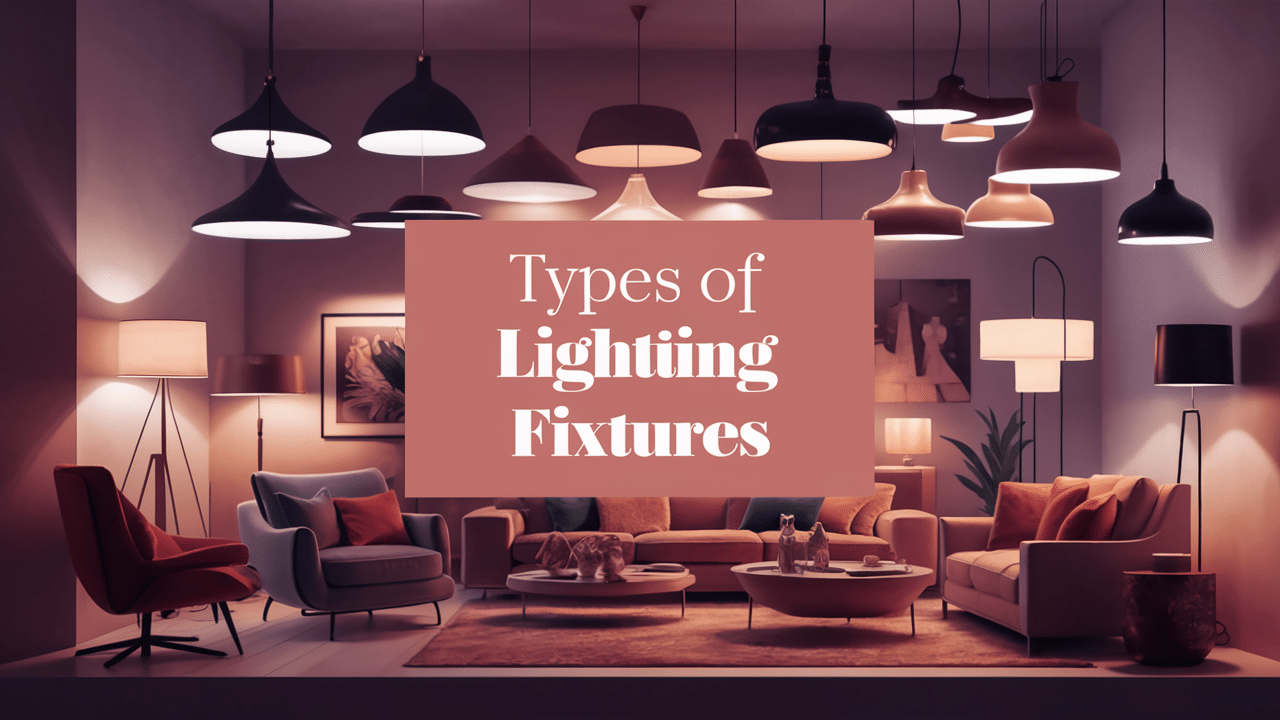Lighting is key to making a room feel just right. The right lighting fixture can change the whole mood and look of a space. But with so many options, it can be tough to know what works best for each room.
From bright ceiling lights to cozy lamps, there are different types of fixtures for different needs. In this blog, I’ll explain the most common types of lighting fixtures and how to choose the best one for every room in your home.
There’s no need to feel overwhelmed—this simple guide will help you pick the perfect lighting for your style and needs. Let’s make your home shine!
What Are Lighting Fixtures?
Lighting fixtures are the physical components that hold and distribute light. They can include anything from a simple table lamp to large chandeliers or overhead lights, and they come in different shapes, sizes, and designs.
They are more than just functional; they can also serve as a decorative element in your home. The right lighting fixture will not only provide the light you need but also enhance the look and feel of the room.
Types of Lighting Fixtures
There are three main types of lighting fixtures that you will commonly see in homes. These are:
-
Ambient Lighting
-
Task Lighting
-
Accent Lighting
Each type serves a different purpose, and the best lighting plans combine all three to create a well-lit space. Let’s take a closer look at each type.
1. Ambient Lighting
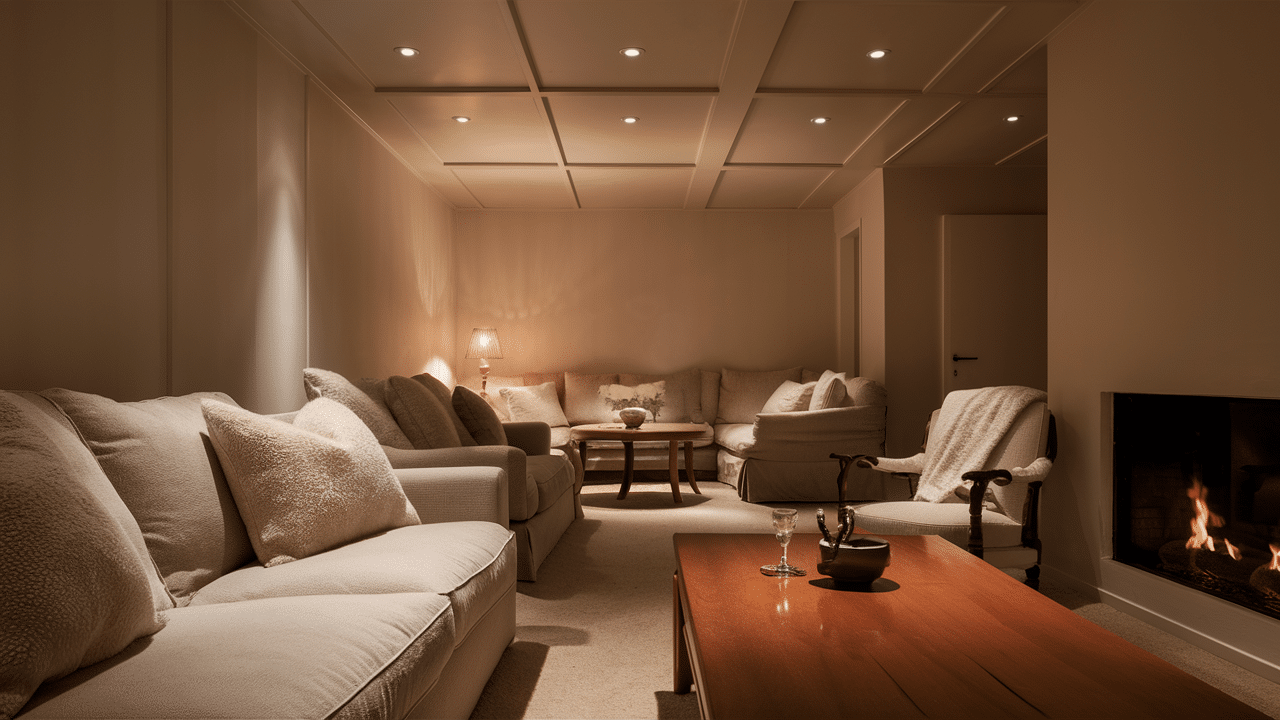
Ambient lighting is the general light that fills a room. It’s the primary source of light and is meant to brighten the entire space evenly. Ambient lighting can come from many different sources, such as ceiling lights, recessed lighting, and chandeliers. It’s important to have enough ambient light so that the room feels bright and welcoming.
Common Fixtures for Ambient Lighting:
-
Ceiling Lights: These are the most common type of ambient light. They come in many styles, from basic flush mounts to more elaborate chandeliers.
-
Recessed Lighting: This type of light is installed in the ceiling and is great for providing even, overhead light without taking up space.
-
Track Lighting: Track lighting allows you to adjust the direction of the light, making it great for rooms that need flexible lighting.
-
Pendant Lights: These are hanging lights that provide both ambient and task lighting, depending on their placement.
Best Uses for Ambient Lighting:
-
Living Rooms: Use ceiling lights, chandeliers, or recessed lighting to create a comfortable, evenly lit space.
-
Kitchens: Install ceiling-mounted lights or pendant lights above the kitchen island to provide bright light.
-
Bathrooms: Ceiling lights and recessed lights work well for general lighting in the bathroom.
2. Task Lighting
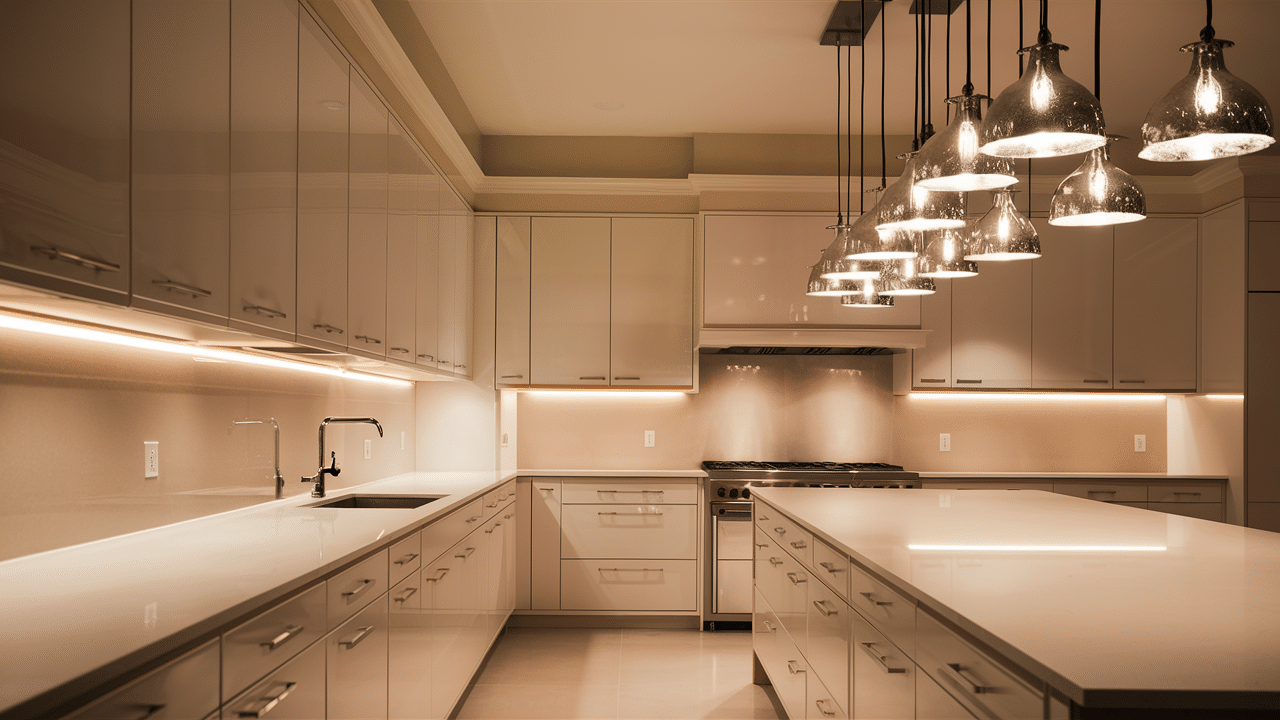
Task lighting is focused light that helps you perform specific tasks. It’s usually brighter than ambient lighting and is designed to make activities like reading, cooking, or working easier. Task lighting is essential in spaces where you need focused light, such as a kitchen or a reading nook.
Common Fixtures for Task Lighting:
-
Desk Lamps: These are great for workspaces or desks as they provide focused light right where you need it.
-
Under-Cabinet Lights: These lights are often installed under kitchen cabinets to provide extra light for countertops and tasks like chopping or cooking.
-
Pendant Lights: Pendant lights can provide focused light over kitchen islands or dining areas.
-
Track Lighting: Track lighting is adjustable, so you can direct the light to where it’s needed, such as over a work surface or reading chair.
Best Uses for Task Lighting:
-
Kitchens: Under-cabinet lighting, pendant lights over counters, and track lighting over islands are great for cooking and food prep.
-
Home Offices: Desk lamps and adjustable task lights help with reading or writing.
-
Reading Areas: Use a bright floor or table lamp to focus light on your book or project.
3. Accent Lighting
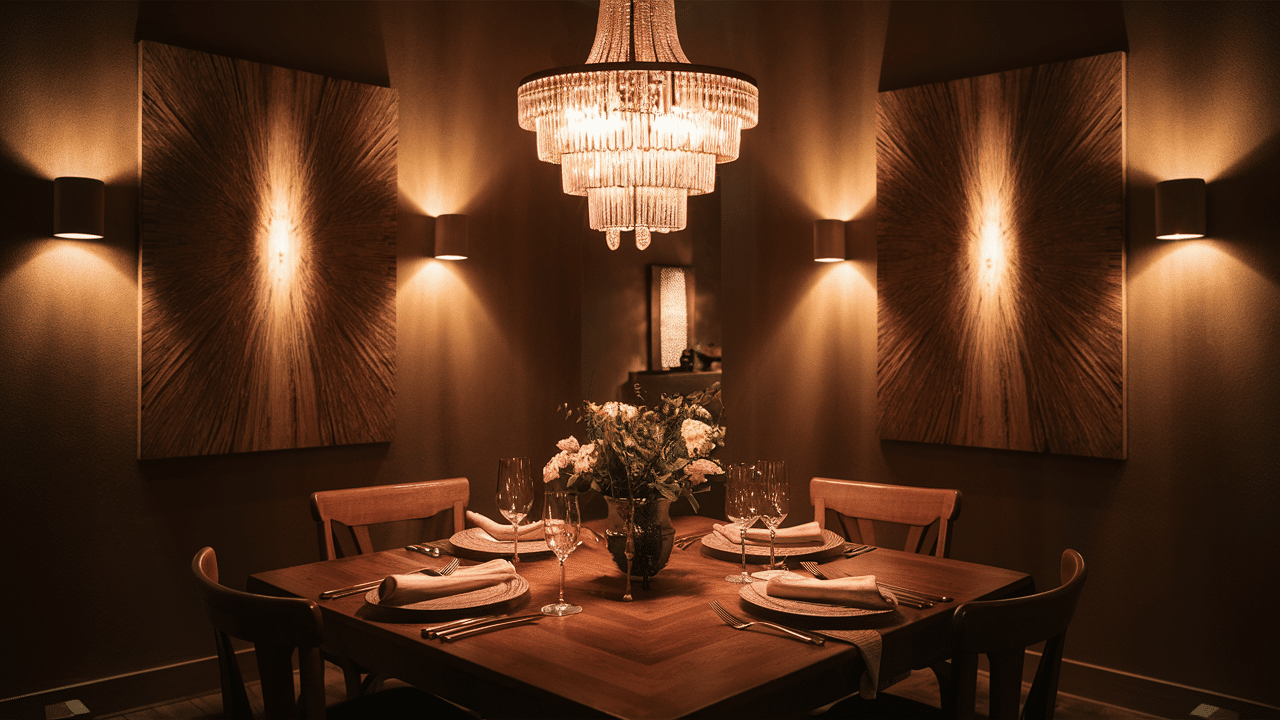
Accent lighting highlights specific features or decor in a room, adding drama and depth. It is usually softer and more focused than ambient lighting, perfect for showing off artwork, architectural details, or plants.
Common Fixtures for Accent Lighting:
-
Wall Sconces: These are mounted on the wall and can direct light upward or downward. They are great for creating a cozy atmosphere and highlighting artwork.
-
Spotlights: Spotlights focus light on specific features, such as a painting or sculpture.
-
Recessed Lighting: When placed in the right spots, recessed lights can highlight particular parts of the room, like a bookshelf or a collection.
-
String Lights: These are often used to create a soft, ambient glow in outdoor areas or living rooms.
Best Uses for Accent Lighting:
-
Living Rooms: Use wall sconces or floor lamps to add a soft glow and highlight special features.
-
Dining Rooms: Use accent lighting to highlight the centerpieces or artwork on the walls.
-
Hallways: Recessed or track lighting can focus on interesting artwork or architectural features along the hallway.
Choosing the Right Lighting for Different Rooms
Now that we understand the different types of lighting fixtures, let’s talk about choosing the right lighting for each room in your house. Each room has different needs, and the right light can make all the difference.
Living Room Lighting
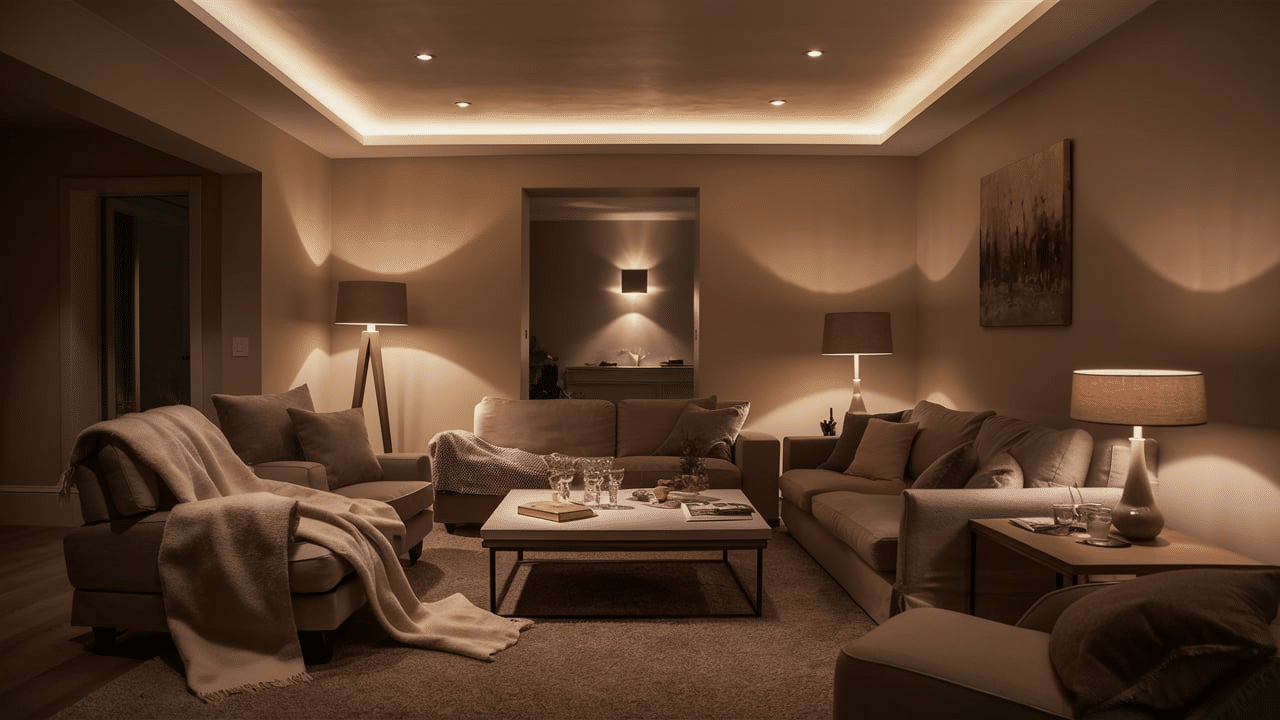
The living room is a space for relaxation and entertainment, so you need lighting that creates a comfortable atmosphere. A combination of ambient, task, and accent lighting works best here.
-
Ambient Lighting: Ceiling lights or a large chandelier can provide the general light for the room.
-
Task Lighting: Use table lamps or floor lamps for reading or other tasks.
-
Accent Lighting: Highlight artwork, plants, or architectural features with wall sconces or accent lights.
Kitchen Lighting
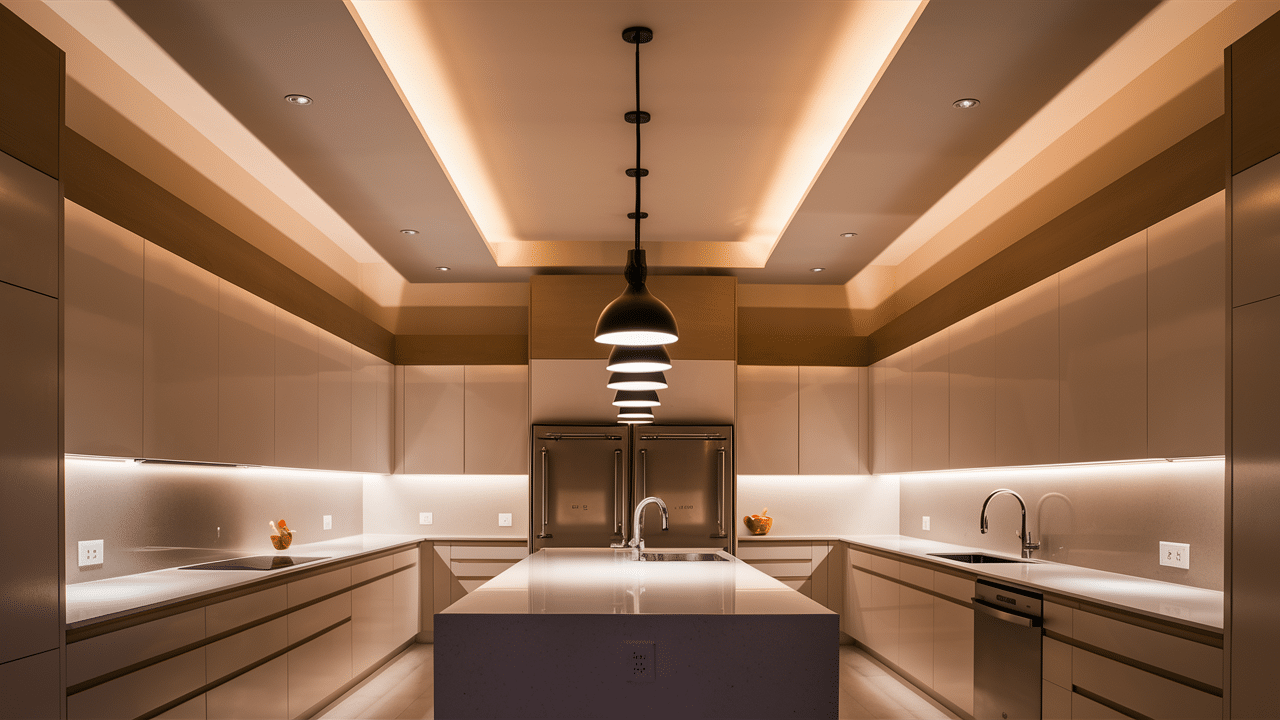
The kitchen needs bright, focused light to help with cooking and meal prep. Task lighting is especially important in this space, along with ambient light.
-
Ambient Lighting: Install ceiling lights or pendant lights to light up the whole room.
-
Task Lighting: Use under-cabinet lights to brighten work areas and pendant lights above the kitchen island for focused light.
-
Accent Lighting: Use spotlights to highlight decorative items or shelving.
Bedroom Lighting
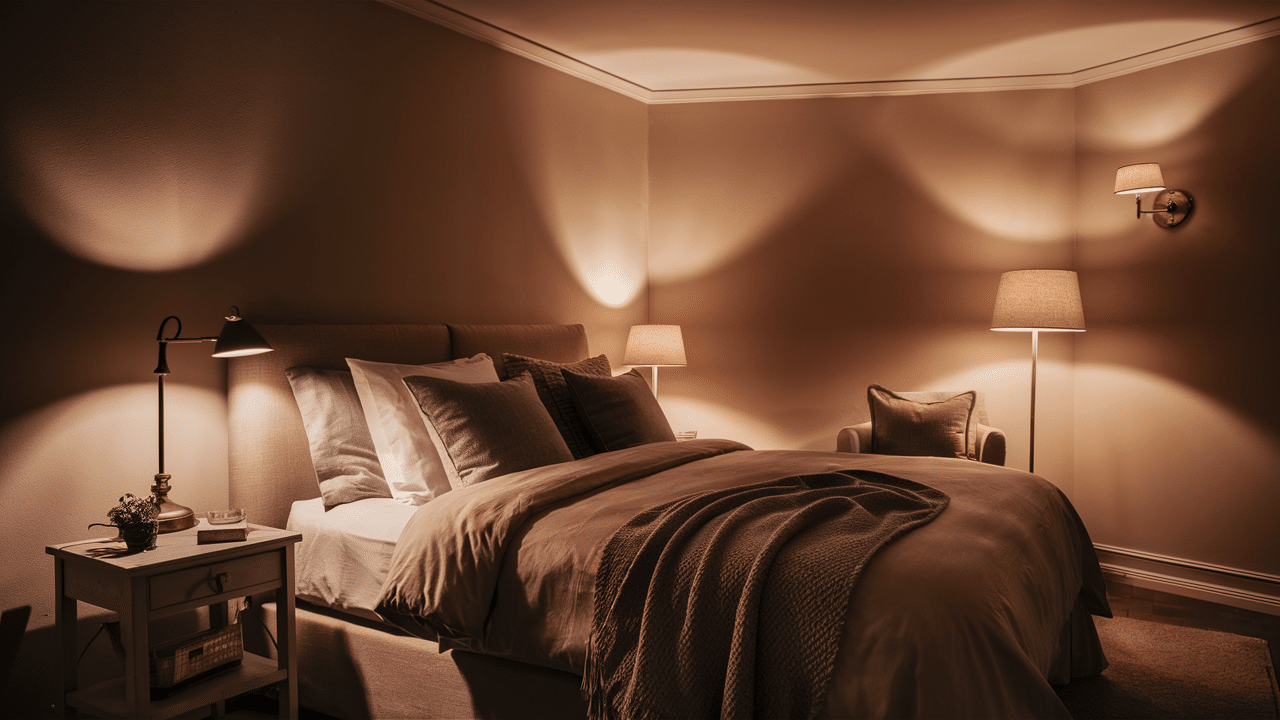
In the bedroom, lighting should be soft and relaxing, helping to create a peaceful environment. Consider using a mix of ambient and accent lighting.
-
Ambient Lighting: Ceiling lights or recessed lighting can provide overall brightness.
-
Task Lighting: Table lamps or bedside lamps are perfect for reading before bed.
-
Accent Lighting: Use wall sconces or soft, dimmable floor lamps to create a calming atmosphere.
Bathroom Lighting
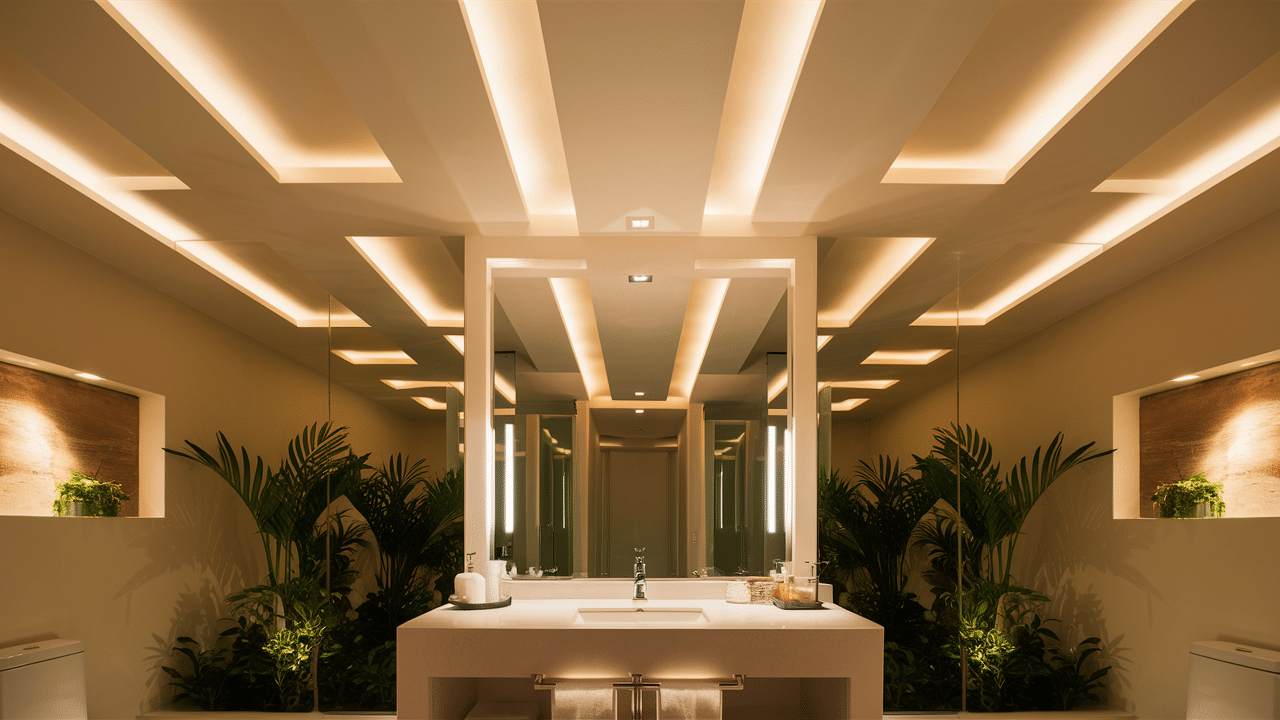
Bathrooms require a balance of ambient and task lighting, especially around the mirror and vanity.
-
Ambient Lighting: Recessed ceiling lights work well for providing even light.
-
Task Lighting: Install lights around the vanity mirror to ensure clear, bright light for tasks like shaving or makeup application.
-
Accent Lighting: Use sconces to highlight features like a decorative mirror or artwork.
Dining Room Lighting
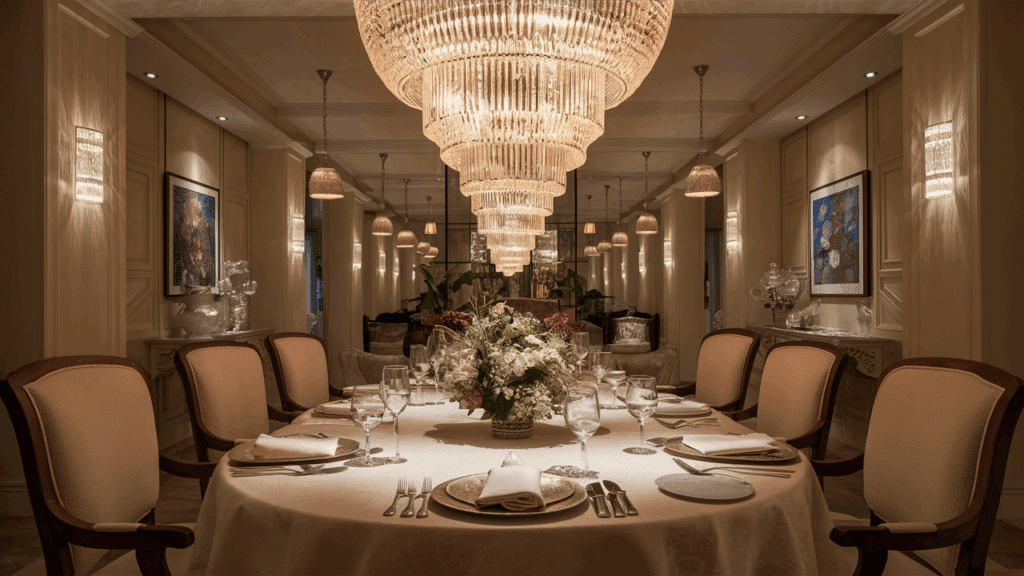
The dining room needs lighting that creates a cozy atmosphere while also being bright enough for meals. A pendant light or chandelier over the dining table is a great choice.
-
Ambient Lighting: A ceiling light or chandelier can provide general light for the entire room.
-
Task Lighting: Use a pendant light directly over the dining table to focus light on your meals.
-
Accent Lighting: Wall sconces or decorative lighting can add a special touch to the room.
Home Office Lighting
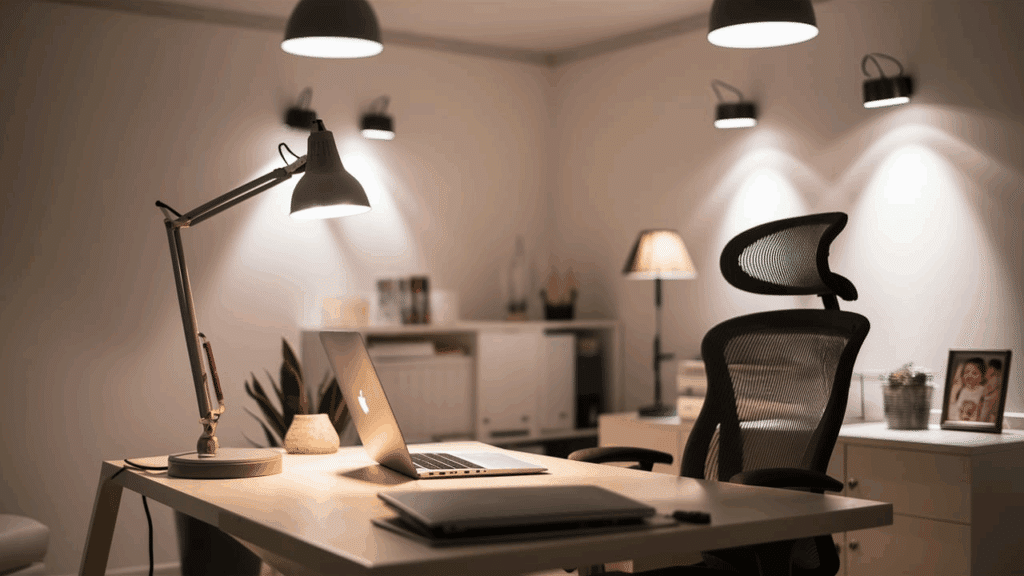
Good lighting is essential in a home office to reduce eye strain and increase productivity.
-
Ambient Lighting: Overhead ceiling lights will provide general illumination.
-
Task Lighting: Desk lamps are important for focused light on your workspace.
-
Accent Lighting: Use accent lights to create a pleasant atmosphere around the room.
Hallway Lighting
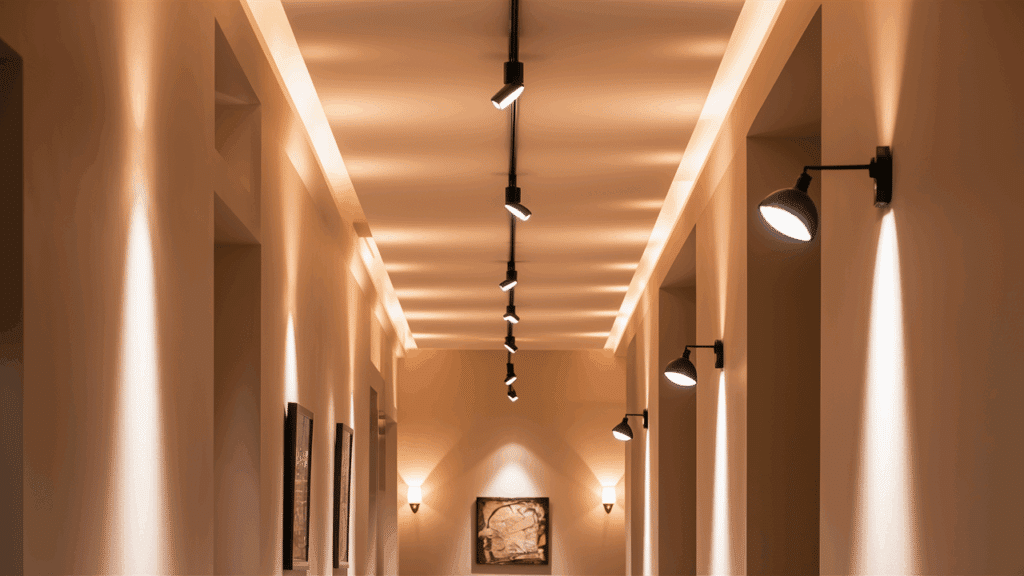
Hallways are often neglected when it comes to lighting, but good lighting can make a hallway feel more welcoming.
-
Ambient Lighting: Ceiling lights or recessed lighting can provide general illumination.
-
Accent Lighting: Use spotlights or wall sconces to highlight artwork or architectural features.
Tips for Choosing Lighting Fixtures
When choosing lighting fixtures, there are a few things to keep in mind to ensure you get the right lighting for your space.
-
Consider the Room’s Size: A larger room may need multiple light sources, while a smaller room may only need one or two fixtures.
-
Think About Your Activities: Choose task lighting for areas where you do a lot of reading or cooking, and accent lighting to highlight art or decor.
-
Use Dimmers: Dimmers allow you to adjust the brightness of the light depending on the mood you want to create.
-
Choose Fixtures that Match Your Style: Lighting fixtures can be a statement piece in a room, so make sure they fit with your overall design.
Conclusion
Lighting fixtures play a key role in making your home comfortable and stylish. By using a mix of ambient, task, and accent lighting, you can brighten any room in a way that fits your needs and enhances the space.
Each room has its own lighting needs, so it’s important to choose the right fixtures for each one. A good lighting plan will help you create the right mood, improve how you use a space, and highlight the things you love in your home.
Remember, the right lighting does more than just illuminate; it adds character and warmth to your rooms. With the tips and ideas shared in this blog, you can easily choose the best lighting for every part of your home. Take the time to experiment with different types of fixtures, and soon, your home will feel more welcoming and bright.

